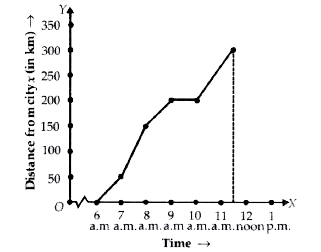(a) How can you visualise a power of 1kW ?
(b) Describe the energy changes that take place when you stop your car by using the brakes.
(a) One watt of power raises a mass of 1kg through a height of 0.1m each second (i.e with a velocity of 0.1m/s)
Note that P=Fv=(10N)(0.1m/s)=1W
(b) The kinetic energy of the car is converted into thermal energy in the brakes.
Topper's Solved these Questions
- SOUNDBOOK - PRADEEPCHAPTER - SOUNDEXERCISE - Model Test (sec - B)
12 Videos
- SOUNDBOOK - PRADEEPCHAPTER - SOUNDEXERCISE - Mock Test (Sec - B)
12 Videos
- MOTIONBOOK - PRADEEPCHAPTER - MOTIONEXERCISE - Mock test
24 Videos
- WORK AND ENERGYBOOK - PRADEEPCHAPTER - WORK AND ENERGYEXERCISE - III Quiz Testing
10 Videos
Similar Questions
(a) Solar cells are used to provide the electric current to charge the batteries of a car driven by an electric motor. Describe the energy changes which take place. (b) What differences would you expect in the charging of car batteries (i) in bright sunlight (ii) on a cloudy day (iii) at night ?
View SolutionExplain how you can take care of your eyes
View Solution
Knowledge Check
Which of the following describes the energy changes takes place when a steam engine drives a generator which lights a lamp?
AHeat → Kinetic → Electricity → Heat and lightBHeat → Sound → Kinetic → ElectricityCHeat → Light → Sound → KineticDKinetic → Light → Heat → ElectricityYou were going somewhere in your car when you sensed an earthquake. Where would you stop your car?
AUnder a bridgeBNear a buildingCNear a lamp postDIn an open parking lotYou were going somewhere in your car when you sensed an earthquake. Where would you stop your car?
AUnder a bridgeBNear a buildingCIn an open parking lotDNear a lamp pos
Briefly describe the valence bond theory of covalent bond formation by taking an example of hydrogen. How can you interpret energy changes taking place in the formation of dihydrogen?
View SolutionThe given graph describes the distances of a car from a city X at different times when it is travelling from City X to City Y, which are 300 km apart. Study the graph and answer the following:
(i) What information is given on the two axes?
(ii) From where and at what time did the car begin its journey?
(iii) How far did the car go in the first hours?
(iv) Did the car stop for some duration at any place? Justify your answer
(v) Was the speed same during the first three hours? How do you know it?
(vi) When did the car reach City Y?

View SolutionThe brakes on your car can slow you at a rate of 5.2m/s2. (a) If you are going 146 km/h and suddenly see a state trooper, what is the minimum time in which you can get your car under the 90 km/h speed limit ? (The answer reveals the futility of braking to keep your high speed from being detected with a radar or loser gun. ) (b) Graph x versus t and v versus t for such a slowing .
View SolutionSuppose that of all used cars of a particular year, 30% have bad brakes. You are considering buying a used car or that year. You take the car to a mechanic to have the brakes checked. The chance that the mechanic will give you wrong report is 20%. Assuming that the car you take to the mechanic is selected at random from the population of cars of that year. The chance that the car's brakes are good given that the mechanic says its brakes are good is-
View SolutionIts always advisable put your car into neutral gear when you stop at a traffic signal.
View Solution
